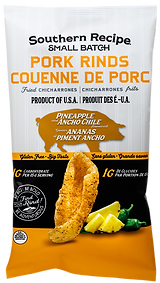Natural vs. Synthetic Vitamins: What's the Difference?
Natural vs. Synthetic Vitamins: What’s the Difference?
In today’s world, vitamins are everywhere—on pharmacy shelves, in grocery stores, and even in your morning smoothie. But with so many choices, it can be confusing to know what’s truly good for your body. One of the biggest questions shoppers often ask at Everything Healthy and More is: “Are natural vitamins really better than synthetic ones?”
Let’s dive into what sets them apart, how each type is made, and how you can choose high-quality supplements that actually support your health.
What Are Natural Vitamins?
Natural vitamins are derived directly from whole food sources. They come from plants, fruits, vegetables, and sometimes animal products, without being significantly altered by chemical processes. For example, vitamin C extracted from acerola cherries or rose hips is a natural form because it’s taken from the food itself.
These vitamins often come with their original “nutrient team” — the co-factors, enzymes, and phytonutrients that help your body absorb and use them efficiently. That’s part of what makes natural vitamins so appealing.
When you eat an orange or take a supplement made from whole-food concentrates, you’re not just getting vitamin C—you’re getting bioflavonoids, antioxidants, and other compounds that work together to enhance your health.
Examples of natural vitamin sources:
- Vitamin A from cod liver oil or sweet potatoes
- Vitamin E from sunflower seeds or spinach
- Vitamin D from fish, eggs, or exposure to sunlight
- Vitamin C from citrus fruits, acerola cherries, or camu camu
What Are Synthetic Vitamins?
Synthetic vitamins are man-made in laboratories, designed to mimic the chemical structure of natural vitamins. They are typically created using industrial processes that combine various chemicals to produce a molecule similar to the one found in nature.
For instance, most synthetic vitamin C supplements contain ascorbic acid, which is chemically identical to natural vitamin C—but it’s usually made from corn syrup or acetone derivatives.
Synthetic vitamins are often more affordable to produce, which is why they’re common in multivitamins, fortified foods, and budget-friendly supplements. However, their effectiveness depends on how your body processes them.
Natural vs. Synthetic: The Key Differences
While natural and synthetic vitamins may look the same on a molecular level, their impact on your body can differ for several reasons.
1. Absorption and Bioavailability
Your body tends to recognize and use nutrients more efficiently when they come from natural food sources. That’s because natural vitamins are accompanied by supporting compounds that help absorption.
Synthetic vitamins may not include these co-factors, meaning your body might not absorb or use them as effectively. For example, natural vitamin E (d-alpha-tocopherol) is better absorbed than synthetic vitamin E (dl-alpha-tocopherol).
2. Synergy of Nutrients
In nature, vitamins rarely exist alone. They work in synergy with minerals, enzymes, and other plant compounds. When you take a synthetic supplement, you might miss out on this natural balance.
A whole-food vitamin C supplement, for instance, contains bioflavonoids that support immune health—something synthetic vitamin C lacks.
3. Purity and Additives
Synthetic vitamins can contain fillers, preservatives, or artificial colors to enhance shelf life and appearance. Natural vitamins, especially those labeled whole-food or organic, are typically cleaner and free from unnecessary additives.
4. Price and Accessibility
Synthetic vitamins are generally cheaper and more widely available. Natural vitamins, especially those derived from organic or non-GMO sources, may cost more—but they often provide greater long-term value for your health.
Are Synthetic Vitamins Always Bad?
Not necessarily. Synthetic vitamins can be beneficial in certain situations. For people with deficiencies or medical conditions, synthetic forms may be easier to dose and standardize. In some cases, your body may even absorb them just as well—depending on the nutrient.
The key is quality. Some synthetic supplements are made with careful attention to purity and bioavailability. However, many low-quality products use inferior forms of nutrients that your body struggles to use effectively.
When shopping for supplements, it’s not only about whether they’re natural or synthetic—it’s about whether they’re high-quality, safe, and effective.
How to Identify High-Quality Vitamins
Choosing the right vitamin supplement doesn’t have to be overwhelming. Here are some simple tips to help you select high-quality options that support your well-being:
✅ Read the Label Carefully
Look for ingredients that come from real food sources. Phrases like “from organic fruits and vegetables” or “whole-food concentrate” usually indicate natural origins.
✅ Check for Additives
Avoid supplements that contain artificial colors, synthetic preservatives, or unnecessary fillers. The cleaner the ingredient list, the better.
✅ Research the Brand
Trusted brands are transparent about where their ingredients come from and how they’re processed. At Everything Healthy and More, we carefully vet all our products to ensure they meet our high standards for purity and effectiveness.
✅ Choose the Right Form
Some forms of vitamins are more bioavailable (easier for your body to absorb). For example:
- Methylcobalamin is a superior form of vitamin B12 compared to cyanocobalamin.
- D3 (cholecalciferol) is more effective than D2 (ergocalciferol).
- Natural d-alpha-tocopherol is better absorbed than synthetic dl-alpha-tocopherol.
✅ Look for Third-Party Testing
Supplements verified by independent organizations—like NSF, USP, or ConsumerLab—have been tested for purity and potency.
Whole-Food Supplements: The Best of Both Worlds
If you’re looking for the most natural way to support your health, whole-food supplements are an excellent choice. These supplements use concentrated fruits, vegetables, and herbs to deliver vitamins and minerals in their natural form—complete with enzymes and phytonutrients.
Whole-food vitamins are designed to work harmoniously with your body, just like real food does. They may cost more than synthetic options, but they often deliver better results in terms of energy, immunity, and overall well-being.
At Everything Healthy and More, we believe in supplementing smart—not just supplementing more. That means focusing on quality, natural ingredients, and trusted brands that care about your long-term health.
The Bottom Line
So, what’s the real difference between natural and synthetic vitamins? It comes down to source, quality, and how your body uses them.
- Natural vitamins come from food and often include beneficial co-factors for better absorption.
- Synthetic vitamins are lab-made and can still be effective—but quality varies widely.
- The best supplement is one that’s pure, well-sourced, and suited to your body’s needs.
Your body deserves the best fuel possible. That’s why at Everything Healthy and More, we offer a wide range of high-quality natural supplements that help you live well—naturally.
Whether you’re looking to boost your immune system, support your energy, or improve overall health, choosing natural vitamins can make all the difference in how you feel—today and for years to come.
Explore our collection of premium natural vitamins and supplements at Everything Healthy and More—because your health deserves nothing less than the best.








